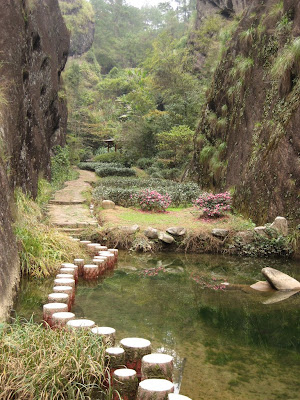
Red Leaf Tea, Peony White
It's late evening, and the family has gone to bed. Time for something to drink. I'm grateful to Red Leaf Tea for their generous gift of tea, which I'll sample tonight.
The Red Leaf Web site reads:
Description:
Hot on the heels of our hugely popular White Tea blends comes this offering that is made of an even higher grade of tea. Peony White Tea is made only from the finest tea buds and leaves plucked in early spring from Fujian province in China. These ingredients are steamed and dried soon after picking, ensuring that all of the health giving properties contained therein is intact.
Brewing Instructions For A Single Cup:
Amount Of Water 6.0 oz
Amount Of Tea 1 tsp.
Water Temperature 170°F
Steeping Time 5-7 minutes
As always, I wish that Red Leaf had published the background of the tea, including details of where and when it was produced, a bit of history about this tea itself, and so on. I have not tried any of the Red Leaf brand flavored white tea mixes, so I can't compare with their other "hugely popular" whites.
THE TEA
Peony White is a white, unprocessed tea that is called bai mu dan in Chinese, and it is one grade lower than silver needle, bai hao yinzhen. I'm initially attracted to this type of tea, because it's unflavored and simple, and should afford some nicely complex flavor and aroma to wake up my tongue and nose tonight.
High-grade white teas are to be steeped for a fairly long time, which allows the layers of flavors to develop. I'm going to steep this at 170 for the entire 7 minutes, to get the full measure that the tea will provide.
MY MEDITATION TONIGHT
While I wait for my tea, I'll meditate a bit on the nature of my changing tastes. When I first started drinking tea, about 20 years ago, I was like most Americans first encountering teas of a higher grade than teabag fannings: I enjoyed the flavored teas with lots of additives. Over time, I settled into a very happy place, drinking high-end, single-estate Darjeelings and other highgrown Himalayan teas, without any additional flavors, trying to refine my own palate. And this year, I am finally delving into the Chinese teas, as well. I'm finding that the highest-end Darjeelings and the Chinese greens tend to reach toward one another, meeting in this zone of clarity in the cup, and brilliance of flavor, and nuanced subtleness that carries me through many stages of flavor and aroma in a cup, and in a pot.
THE PREPARATION
1.5 cups boiling water, brought down to 70C, with 2 heaping teaspoons of tea, in Great-Grandma's porcelain Japanese pot. One of these days, I'll perhaps start investing in Yixing, but at the moment, this is producing a pretty nicely consistent product.
THE LEAVES
Dry, they are silvery-gray buds with a very floral aroma in the high register, without a lot of deep or darker scent.
THE CUP
This tea has a very deep, port-wine golden color to the liquor, while still retaining its transparency. The tea has a very, very light scent, which is barely noticeable, but which is definitely floral in character. This is a very subtle, very smooth tea.
I don't know why, but this tea sets my mind thinking in terms of sound: This tea, were it transliterated into music, would be Samuel Barber's Adagio for Strings, Op. 11., perhaps; or piano music by Ginastera. In fact, I've put this music on in the background while I drink, a Pandora Web radio station that works nicely in the U.S.: http://www.pandora.com/?sc=sh30802010806901952 .
The tea, like the music, is polished and does not have sharp edges to jar me as I drink and listen. In some ways, this is a bit too subtle, a bit too restrained for my taste, yet still lovely. The bai mu dan has notes of honey, of cherry fruit, of green grass-- but one has to go looking for it, searching the subtleties out carefully to capture the quiet sensations. The tea coats the mouth with an almost buttery sensation, without any hint of dryness.
OVERALL IMPRESSIONS
This tea carries very lovely flavors, but in such a muted way (almost to the point of dullness) that I stretch to really discern what is going on here. I drink this in Spring 2009, and this is the Spring 2008 vintage. It is perhaps because the tea has been sitting a complete year before drinking that accounts for the overly restrained character of this cup. I'd like to try this Peony White again with a very fresh Spring plucking to see how they compare.
(Photo can be found on this lovely travel blog post, ComeFollowUs.com: Wandering Through Wuyishan)


0 comments:
Post a Comment